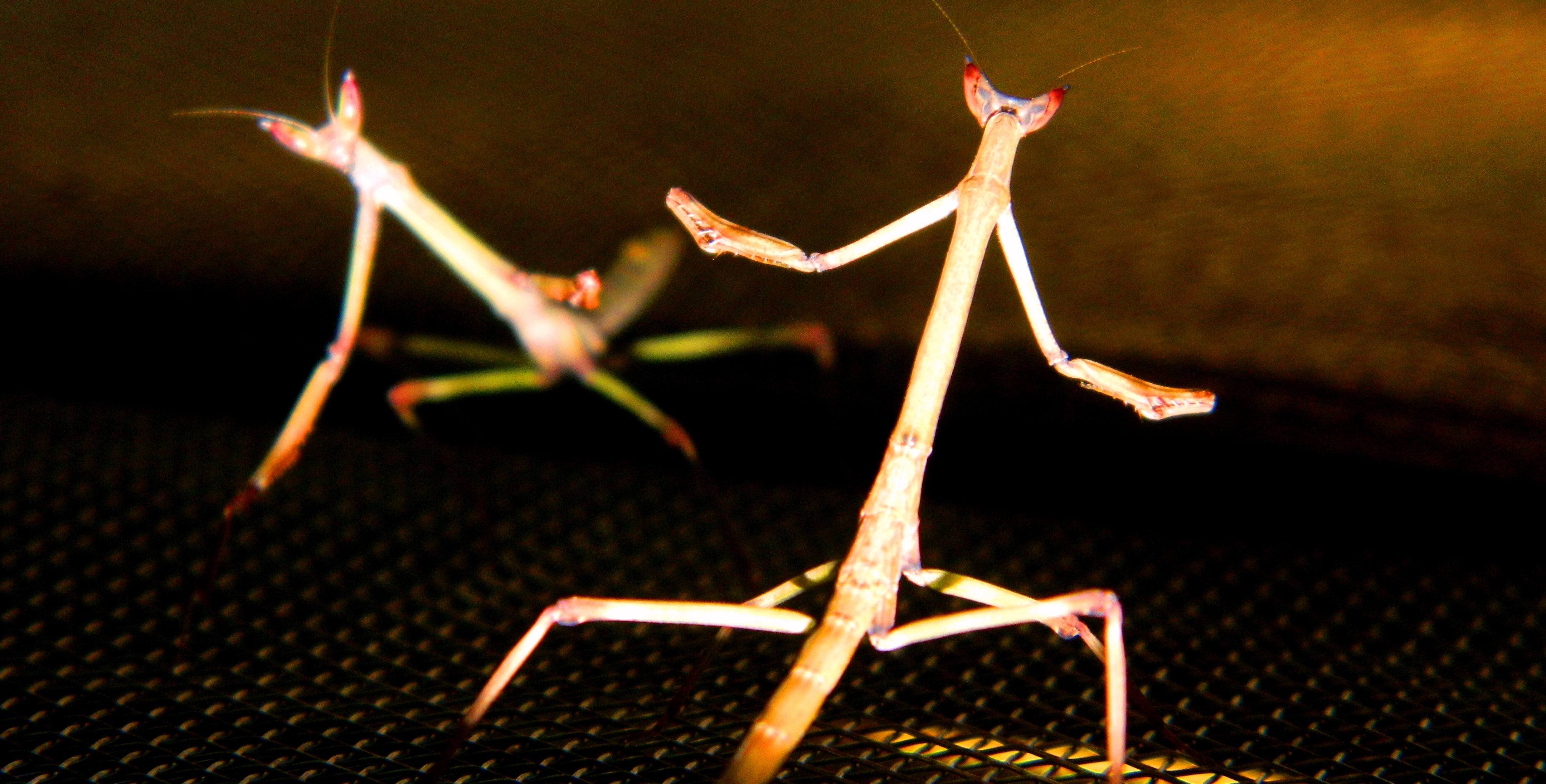Giant African Stick Mantis Caresheet
Housing
The Giant African Stick Mantis (Heterochaeta sp.) should be kept in an enclosure that is at least 3 times as tall as the mantis is long, and at least 2 times as wide as the mantis is long. This can be challenging as these mantises get older, as they can get very large – up to 6 inches long as adults! The cage must have adequate ventilation, and some kind of material on the ceiling of the enclosure which will allow the mantis to hang upside down during molting, as well as an empty space at the top which is at least 2 times the size of the mantis. They can be kept successfully in a living vivarium with live plants and microfauna (e.g., springtails and isopods) who will act as a sort of "clean up crew" by breaking down the mantis's waste. They can also be kept in a temporary enclosure such as a mesh cage or screen cage, with silk plants (such as an Ivy Branch, Leafy Branch, Orchid Flower, or White Flower) and an easily disposable substrate such as sphagnum moss, or even just a paper towel that you can change once a week. However, if you chose to keep them in enclosures with glass or clear plastic sides, a mesh or screen top from which they can easily hang upside down is necessary, along with plenty of sticks that run from the top to the bottom of the enclosure, to ensure they can get around easily.
Temperature & Humidity
Heterochaeta can tolerate a fair range when it comes to temperature and humidity. They should do well being kept between 60°F and 80°F, and at least 30% relative humidity (RH).
The enclosure should be given a light misting at least once a day so they can drink. When kept in mesh cages, we mist their enclosures twice a day. Most mantises do not like getting sprayed directly, so it is best to try and spray around the mantis, but if you get them a little wet by accident, it is usually no big deal. Use spring water, distilled water, or water filtered by reverse osmosis (RO), but do not use plain tap water.
Feeding

The Giant African Stick Mantis has a fairly light appetite compared to some species and, despite their large size as adults, tend to prefer flying prey throughout their entire lives. These mantises can be fed only blue bottle flies throughout their entire adult lives and remain perfectly healthy and happy.
- L1 nymphs: Should be fed D. melanogaster fruit flies.
- L2 and L3 nymphs: Should be fed D. hydei fruit flies.
- L4 and L5 nymphs: Should be fed house flies, green bottle flies, or small blue bottle flies.
- L6 nymph to adult: Should be fed blue bottle flies.
A good formula to follow when feeding these light eaters is as follows:
- L1 to L3 nymphs: Feed 6 to 12 fruit flies per nymph, twice a week.
- L4 to L6: Feed the equivalent of 4 flies per mantis, 3 times a week.
- Adults: Feed the equivalent of 6 flies per mantis, 3 times a week. Double this for laying/mated females.
However, if all the food is gone before the next scheduled feeding, you can always add more food. Heterochaeta are not prone to overeating. They will not eat just because the food is there; however, they WILL be stressed by too much excess food crawling around their enclosure.
For additional information about the Giant African Stick mantis, including breeding and ootheca care please reference the link below:
Giant African Stick Mantis (Heterochaeta sp.) Caresheet – Mantid Forum

